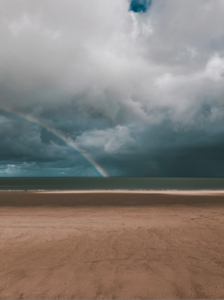Tag Archive for: Training
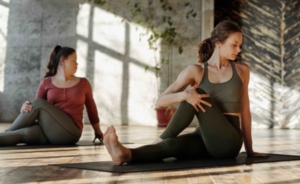
Are you only interested in the asana? Classic theory? Do you want to know the Sanskrit names for the poses? Are you looking for a more contemporary or contemplative approach?
Spend some time with this question and be as specific as possible. Some programs might say they cover meditation but what does that really look like? How long do you meditate and for how often?
If you don’t know what you want out of a program you might end up with ‘buyer’s remorse’. It’s a big investment, have a clear idea of what you want out of the experience before going in.
Have a clear idea of what you want out of the experience before going in.
Denver Yoga Underground is more holistic than most, we focus on yoga as an entire system. This includes: asana, pranayama, meditation, traditional theory, diet, and lifestyle. Every aspect of your life will be touched by a dedicated and integrated practice.
We present many yoga practices and principles and you are also a big part of the curriculum. At its core, yoga is a process of self experimentation and self discovery. The content of a yoga teacher training will profoundly shape your ability to see yourself.
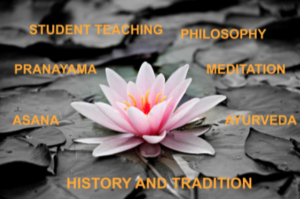
When taught as an integrated system, the power of yoga practice is much greater than the sum of its parts. If you just want to know about asana, a singular thread of teaching is less important. However, if you want to study yoga as a holistic practice for physical, mental and spiritual well being, a focused approach helps greatly.
If you just want to know about asana,
a singular thread of teaching is less important.
Imagine that yoga is like a flower. Each petal represents a different aspect of practice, together the individual petals have a combined magic effect. Recall the serene image of a lotus….
Some programs have just a few petals (asana and student teaching). Other trainings have more petals but they are disjointed, with no common or integrated shape to the program. It’s a more “grab bag” approach with an amalgamation of teachers who have studied at various places.
Nonetheless, some people naturally feel more drawn to variety and a wide array of teachers may speak to them. It really comes back to what you want in a training – a more broad approach, a more focused approach, or something in between.
In my experience, two to three teachers should be more than enough to present an integrated training. Anymore than that and it can become diffused. Ideally, those teachers have studied under a similar master and have a similar philosophy. To go one step further, it helps if the staff has worked together for at least three years, and had time to hone their message and understanding of one another’s content.
To assess how many instructors ought to be in a yoga teacher training, reflect on what kind of experience you want to have and how deep you want to go.
Back in the day, there we’re very few yoga teacher trainings to choose from. That has changed drastically over the past 10 years, and now, with the advent of the Corona Virus, you can find many, many trainings online. So, how do you select the best yoga teacher training?
Best is a very relative term. From a yoga philosophy perspective, “best” is entirely subjective. There is not definitive standard by which we can say one object or concept is superior to another.
Most people would agree that a Tesla
is “better” than an AMC Pacer, however….
Yes, most people would agree that a Tesla is “better” than an AMC Pacer, however it is not 100% agreed upan and the distinction between the two is in the mind of the beholder. (Personally, I have an affinity for the Pacer, a classic in its own right!) This is distinct from a Universal Truth such as “everything changes”.
Philosophy aside, some yoga trainings will resonate with you more than others, and your subjective like or dislike of a program has merit. Afterall, YTT is a significant investment and – potentially – has much to offer you in the way of personal and spiritual enrichment. Not to mention a career life path.
Back to the initial question, how do you select the best yoga teacher training for you?
The first step is to identify what you want in a program. Some programs just focus on the postures and are ignorant of the traditional roots of yoga or actively reject those teachings in favor of their brand message. No Om Yoga is a clear example of this.
Other trainings, will embrace the rich heritage of yoga and present it as a holistic system. Denver Yoga Underground falls into the latter category.
Start with self inquiry. Ask what you ultimately want at the completion of the program? I recommend you explore this and other questions with a free-write journal exercise. Move the pen for 5 to 10 minutes.
Some questions to get you started:
- In a perfect scenario, how would things be different at the end of the training?
- Reflect upon teachers who inspired you. What was it about their demior or the content the presented, that was most enriching. Be as specific as possible.
- Are you more interested in personal growth or actually teaching?
Over the next few months I will continue to post thoughtful questions and reflections to help guide you on your path to select the best yoga teacher training.
There are many ways to communicate as an instructor. In this segment we will explore Figurative Language when teaching yoga. Figurative language is more sensual than it is literal, it invites the student to see and feel their body and mind as a poetic process. This language invites us to soften the analytical mind with metaphor, imagery and even wisdom. Figurative language invites the muse to guide the heart, mind and tongue.
It encourages students to see the practice and themselves through a unique lens; a specific color: such as red, yellow, or perhaps green. Each color has a unique feeling-tone. This specific color invokes a kind of felt-atmosphere or bhavana in Sanskrit. Different kinds of music carry a particular bhavana and have their own enchantment.
In contrast, Subjective Language is more neutral. It does not have a particular agenda other than to be aware of what is happening in the immediate moment. It’s the difference between observing the sunset and being the sunset.
It’s the difference between observing the sunset and being the sunset.
There is a definite place for Figurative Language when teaching yoga. It needs to be authentic. It is important that Figurative Language be authentic. Silly analogies or forced metaphors will not suffice. This language is the voice of creative inspiration that cracks open a layer of insight in the student – a ray of light in a darkened sky. Or simple helps them feel held and more in touch with their imagination.
Generally, figurative language is used sparingly, and makes up about 10% of instruction.
Some may struggle to find their authentic creative voice, and to project it into the room, particularly as a new teacher. However, you do not have to start with a literary masterpiece on the first day.
Here are a few suggestions to help you begin:
-
- Teach depth rather than breadth. Gear your class towards ONE simple principle, or theme and explore it in detail.
- Ask provocative and rhetorical questions.
- Share readings with heart
- Use metaphor artfully
- Make use of poignant silence
- A well timed joke. Laughter brightens joy
- Teach yoga philosophy in the most simple way possible without diminishing its intent and meaning. Be respectful.
- Use synonyms to emphasize a particular point. How many ways can you describe a similar action in a posture?
- Maintain a regular yoga practice and speak from experience
- Integrate one or two of these principles at a time
I have been in the yoga teacher training trade for almost 20 years. The first training sessions were nowhere near as polished and the current program. Still, the students loved the spirit of the training, even with the rough edges. Initially, practice student teaching was an afterthought and now it is a mainstay. Yoga teaching language is one of the most important skills we present.
While 65% of people learn visually, 5% kinesthetically, and 30% auditorily, the great majority of yoga instruction happens on the auditory leve. A teacher projects their presence and voice into the room. As such, what you say, and how you say is critical and it happens on a variety of levels.
Perhaps you have experienced a class where the teacher gracefully cued you into a pose, offered whimsical metaphors, challenged you, and helped you to feel ‘whole’. Chances are pretty good that did not happen by accident, there is a method to how they use yoga teaching language.
There is a method to how they use yoga teaching language.
In this series we will look at three principles of yoga teaching language. For today we will look at Directive Language.
Number One: Directive Language
Directive language makes up roughly 80% of posture instruction. It is the most base-line aspect of teaching. The goal of directive language is to provide clear instruction – the teacher is clear in their intent and the student is clear on what to do.
Contrary to directive instruction, is ambiguous speech which consists of filler words such as “umm”, “like”, “sort of”, “kind of”, “now we’re gunna”, or excessive use of gerrings.
Gerrings are words that end in “ing” and are to be avoided. It is the difference between “Lifting” and “Lift”; “Stepping forward” and “Step forward”; “Opening your top chest” and “Open your top chest”. Can you hear the distinction? One is more passive and the other more declarative, which is important if you want to guide a group of people.
Another enemy of Directive Language is to state the overly obvious and or vapid. Cues such as “feel the stretch” in a forward fold or “feel your back” in cobra pose detract more than they add. After holding warrior three for 45 seconds, why remind people that “this is a hard pose”?
“What does not add subtracts”
– Aristotle
In addition to making instructions clear, directive language moves the class forward. Every word serves a purpose towards a specific end. The end goal could be a particular posture, a final meditative practice, or to learn a key physical action.
Economize words and learn to cue with brevity.
Directive language is quantitative You can count, measure or specifically apply the instruction.
I wanted to take a moment and share our Yoga Teacher Training Covid Response Plan. Thankfully, Denver is reopening its doors and we hope it will not be an issue. While we are doing our best to be preventative, also recognize that there also factors that are beyond our control and may have to adopt an online format. Not my first preference, but possible necessary in full disclosure.
But here is the good news, we have a very robust yoga teacher training covid response plan in place:
- Our rental space is separate from the rest of the building and is used minimally.
- Regular cleanings.
- Ample hand sanitizer, tissues, etc.
- Masks required. Simple and effective.
- Personal prop kit (including blankets, blocks, a strap and bolster) for your individual use only.
- Limited class sizes
- Outside class sessions. (weather permitting).
- Spiritual practice for protection and healing including mantra and meditation.
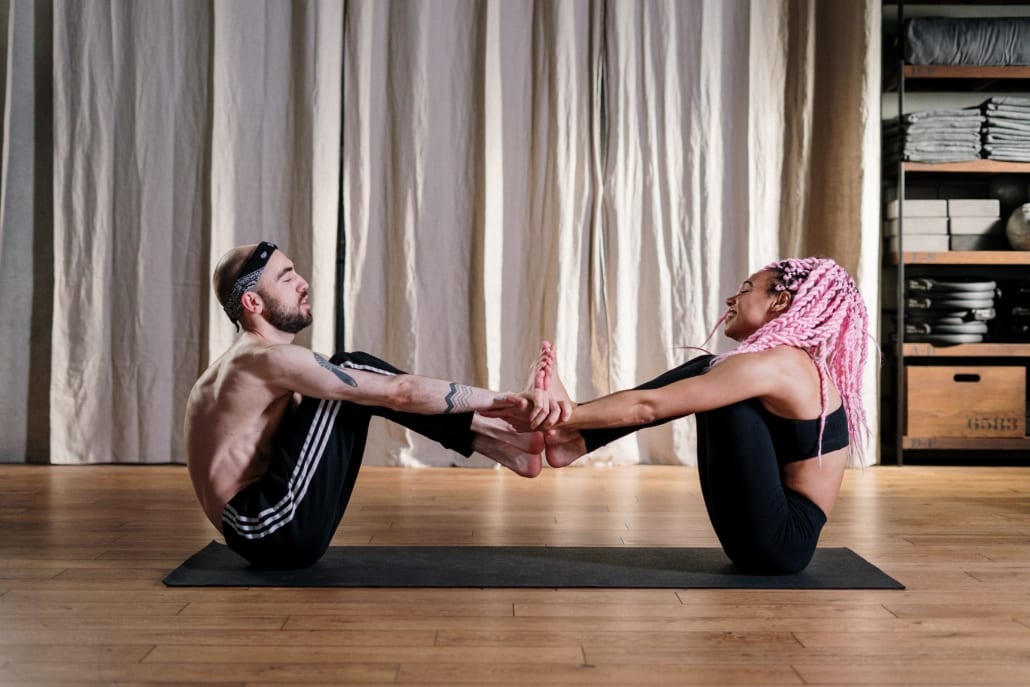
A few weeks ago, I brainstormed a list of 24 different ways to language yoga postures; from controlling the tone of one’s voice to the art of remaining silent. As part of this process, I also mapped out common expressions, including the most cliche yoga teaching cues.
I frequently hear it across gyms and studios, and is recognizable. I’m sure there are lots of people that would disagree with me but “if it is in your practice, then _______.” is by far the most cliche yoga teach cue. Perhaps it comes from something the put in the water at the majority of yoga teacher trainings?
Teachers use this instruction to tell students they can do the pose in one of a few ways. Sometimes these “modifications” vary greatly from the standard posture, transitioning from Prasarita-padottanasana (wide foot forward fold) to Sirsanasana (headstand) for example.
Designing a class is little like baking, in which each ingredient lends itself to the other ones. “If it is in your practice” unnecessarily invites a wildcard into the equation, particularly when it becomes a free for all. If the recipe calls for flour and people reach for the salt instead, it becomes problematic.
If the recipe calls for flour and people reach for the salt instead,
it becomes problematic.
Left to fend for themselves, students may look around the room for guidance. When the class atmosphere is competative, students are tempted to emulate the most advanced version of the posture, one that is well outside of their sensible range of ability. At this point, the risk of injury goes up and the deeper spirit of yoga is lost.
Finally, this cue removes the onus of teaching from the teacher and onto the student. In my own classes, I want to impart a tangible skill or experience to the students, rather than leave them to figure out and risk injuring themselves. The teacher has a responsibility to be knowledgeable enough to safely guide students.
Fortunately, we can easily offset the pitfalls of the most cliche yoga teaching cues. We can restore the balance between student and teacher. The solution is simple, explain “why”. Rather than giving an open-ended invitation, put some parameters around it. Under what circumstances does a student choose option A over B? And under what circumstances shouldn’t they go with option B? This is your moment to steer shy of pat expressions, shine as a teacher, and keep your students safe.
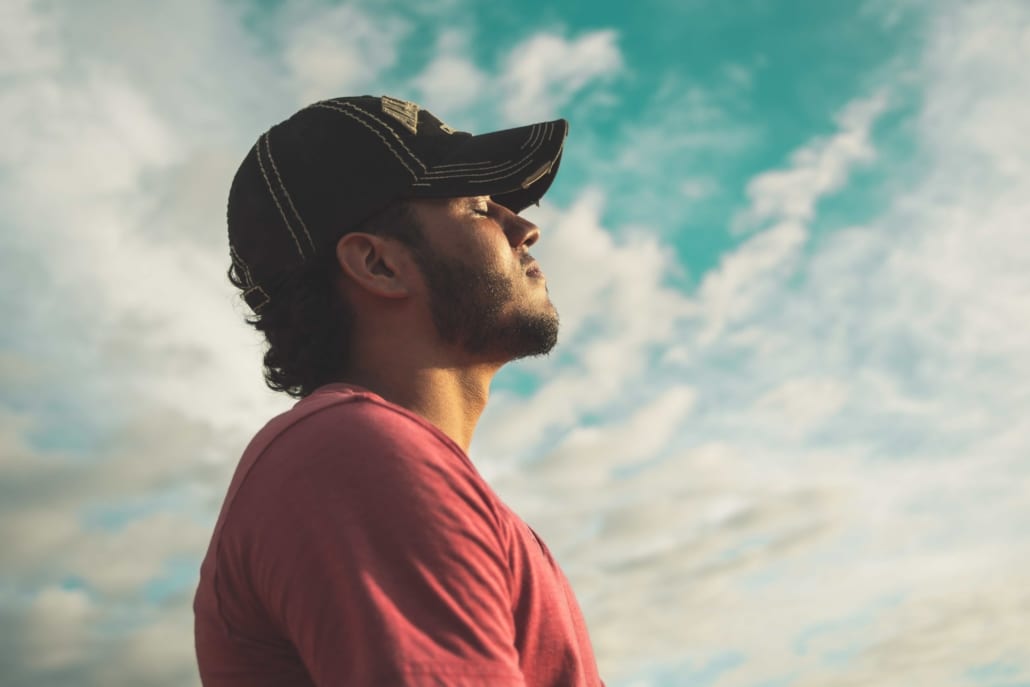
Asana, pranayama, meditation, and other Tantric-Yoga methods remold your psyche from a limited understanding (avidya) to greater Self-understanding. In short, they maximize joy and minimize suffering.
To become proficient at blending these Tantric-Yoga methods requires ongoing practice, refinement, and moments of inner realization. It’s an extraordinary journey that gradually begins to touch upon every aspect of one’s life.
Tantra is somewhat unique on the horizon of spiritual methodologies; it prescribes practices to suit the needs of the individual. Each of us is unique (and similar in ways) and our approach to yoga ought to reflect our particular needs.
Our approach to yoga ought to reflect our unique needs.
To accommodate the needs of the individual, Tantric-Yoga methods can be very complex and nuanced. It takes time, and some trial and error, to learn how to synergistically blend asana, pranayama, mantra, and meditation techniques. Of course, an accomplished teacher also helps.
Done well, the result of these interwoven practices is far greater than the sum of their parts. Asana and pranayama practice, implemented prior to meditation, will powerfully enhance meditation exponentially.
They support one another in an interwoven and radiant tapestry. These interconnected practices, done in support of higher realization, is one of the very definitions of “tantra”. In many ways, the journey through Tantric-Yoga is a journey through the interconnected threads of practice.
While the variety of practices may seem disparate, there is a central thread that underscores them all; that thread is prana. Prana is the life-force of the creation, the very force of transformation itself; our quest for greater peace and self-actualization hinges on this critical ingredient.
There is a central thread that underscores them all;
that thread is prana.
All of the techniques interface with prana specifically. In many ways, prana is the primary teacher that not only leads us to greater levels of self-mastery but also guides us towards the innermost teacher within us all, the Self or the Soul.
Tantric-yoga methods support us to contact this Self and in turn, the Self aids you to learn and apply the forces of asana, pranayama, and meditation optimally. Over time, one recognizes the pranic-force within these methods and thus the cycle of continued growth carries on. One becomes more adept in their life and access Spirit more readily.

First, a word of thanks to all of those who extended their good wishes, food, and prayers after I broke my leg some three weeks ago. I’m happy to say that the force of healing is alive within me and I make noticeable progress each day. In part, I attribute this healing to repetition in meditation.
As an offshoot of that healing process, I started to offer a free, online meditation course on Wednesday and Friday mornings, 7:30-8:10am. The class consists of a brief asana practice, opening mantra, followed by pranayama, then meditation proper, and a closing mantra. Admittedly, it starts abruptly to ensure we cover these synergistic practices. We don’t discuss theory so much as, well, just get started.
So, I want to give a little context and share one simple idea underlying our practice. That is simply this, “repetition in meditation”. Repetition is integral to any discipline; whether it be learning the violin, fostering a loving relationship, or advancing spiritual growth. The journey of 1,000 begins with the first step. And then the next step. And then the next step…. repetition.
There is a fairly well-known expression within meditation circles:
“Better to dig one deep well than many shallow holes.”
For this reason, the repetition in meditation technique I present remains the same for the remainder of the series. My hope is that we get enough of a footing on the method that it becomes a part of us – to give it a fair chance to positively shape the way we view ourselves and our world.
Adopting a single technique for forty days is a common benchmark to get acquainted with a technique. After those forty days of repeated practice, you can adequately assess if you wish to continue, or not. There is an overwhelming chance that you will see the benefit and want to continue, you will have seen the value of repetition in meditation.
At the same time, we live in a culture obsessed with variety, innovation, and distraction (largely for commercial purposes). Methodical repetition is antithetical to the pace of modern life (though that seems to be on hold for the moment). However, to develop mastery, or better yet, to develop mastery of your mind, body, and character it takes more than one try. With persistent effort, you will discover the benefit. The meditation class is here to support you to develop that skill. Of course, I’d encourage you to practice outside of class as well.
“The beginner has many options, the master very few.”
The beginner has many options, the master very few. As you develop your meditation practice, I invite you to embrace repetition. Through repetition in meditation, gradually clear away the dust and grime that obscures the inner-mirror. This inner-mirror aids you to see yourself more clearly, to dismantle fear and anxiety and reflect greater peace and joy back upon you. But it doesn’t all happen by itself, it requires repetition.
Dates & Times:
- Present through May 1st, 2020
(May extend depending on interest) - Wednesdays and Fridays, 7:30-8:10am.
- Online Zoom entry-link provided with registration
= Free of Charge =
About Us
The Denver Yoga Underground began in 2003 at the request of dedicated students who wanted to study yoga as a holistic system. Over the years, a diversity of people, seeking education outside of a studio, found a welcome refuge in DYU.
Today we specialize in grassroots Pay What You Can workshops, accessible retreats and our signature yoga teacher training, for the outlier yogi.
Contact Us
Derik Eselius ~ 720.934.6934
Training Location:
Sixth Ave. UCC 3250 E. 6th Ave


